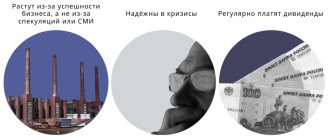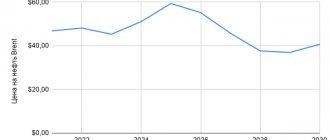The financial market is a complex ecosystem consisting of a large number of diverse components. It naturally also includes a wide range of participants at both ends of the spectrum. And the investors who have accumulated there are no exception in this regard.
Just like there are individual investors, there is also a significant group in the financial market called institutional investors. This category of investors plays an important role in the financial market due to their distinctive characteristics as market participants.
Institutional investors
Institutional investors are legal entities that participate in trading in the securities market. Most often they are large organizations from the brokerage and banking sectors.
This group also includes any large funds that manage the assets of their investors and try to obtain a percentage of profitability through trading operations. Such companies form their portfolio from a variety of assets, taking into account the acceptable level of risks.
Pension funds should be identified as a separate group. The principle of their operation is similar, but a long-term planning horizon, reliability of deposits, lower risks and greater diversification are taken into account. Let's talk about the goals and objectives of each group separately.
Institutional Trading: Advantages and Disadvantages
| ADVANTAGES | FLAWS |
| ✅ Institutional trading manages large amounts of capital ✅ Great potential for diversification when managing large capital ✅ Access to better prices ✅ Access to major financial news portals ✅ Access to the best technologies and platforms | ❌ Some institutional traders have little flexibility in choosing assets. ❌ High risk ❌ In some cases, the regulation is very strict and prohibits institutional traders from trading in some markets. |
Today, the gap between the institutional and retail trader has narrowed. Technological progress allows even an ordinary private trader to use a convenient and understandable trading platform, as well as trade derivative financial instruments, such as contracts for difference (CFDs). All you need to trade is a reliable broker and an account with him. If you would like to try trading with a trusted broker, click on the banner below, open a live account with Admiral Markets and just get started!
Motivation for activity
Private investors know that keeping their finances in a regular account not only prevents them from growing, but also gradually reduces their value due to inflation. Large companies also know about this, so they direct their funds to the stock market.
The first group is companies that want to have additional profit. There are no significant differences with private investment, except that instead of one person’s money, the money of the entire enterprise is transferred into securities. This is one of the steps in the long-term planning of an organization's profit, for the execution of which a special investment department is responsible.
The second group are organizations that intend to make money not only for themselves, but also for their clients. These are the investment companies already mentioned above. They work on the principle of mutual funds. Clients buy back part of the shares, and the resulting capital is placed by managers on the market. This generates income for the client, as well as interest for the company itself.
Story
Ancient Rome and Islam
Inscription in honor of Aristoxenus, son of Demophon, probably the patron of the gymnasium in Athens, late 3rd or 2nd century BC. E., Musée du Louvre
Roman law ignored the concept of legal personality, but at the time the practice of private evergetism (which dates back to at least the 4th century BC in Greece) sometimes resulted in the creation of income-generating capital, which can be interpreted as an early form of charitable institution. In some African colonies in particular, some of the city's entertainment was financed by income from shops and baking ovens originally offered by a wealthy benefactor. In southern Gaul, aqueducts were sometimes financed in a similar way.
The legal principle of legal personality may have emerged with the rise of monasteries in the first centuries of Christianity. The concept could then be adopted by emerging Islamic law. The waqf (charitable organization) became the cornerstone of funding education, plumbing, welfare and even the construction of monuments. Along with some Christian monasteries, waqfs, established in the 10th century AD, are among the oldest charitable organizations in the world (see, for example, the Imam Reza Shrine).
Pre-industrial Europe
Following the proliferation of monasteries, almshouses and other hospitals, donating sometimes large sums of money to institutions became common practice in medieval Western Europe. In the process, over the centuries, these institutions acquired significant estates and large fortunes in bullion. Following a sharp decline in agricultural income, many of these institutions moved away from rural real estate to focus on bonds issued by the local sovereign (a shift dating back to the 15th century for Venice and the 17th century for France and the Dutch Republic). . It is impossible to overstate the importance of secular and religious institutional ownership in the pre-industrial European economy; they typically owned between 10 and 30% of a given region's arable land.
In the 18th century, private investors pooled their resources to purchase lottery tickets and tontine shares, allowing them to spread risk and become some of the earliest speculative institutions known in the West.
Before 1980
After several waves of disintegration (mainly during the Reformation and Revolutionary periods), the weight of traditional charities in the economy collapsed; by 1800 the institutions solely owned 2% of the arable land in England and Wales. New types of institutions emerged (banks, insurance companies), but despite some success stories, they were unable to attract a large share of the public's savings, and, for example, by 1950 they owned 48% of US shares and, of course, even less in other countries . countries.
Investment companies
These are representatives of the second group, business projects, whose main activity is related to generating income from the use of other people's capital at auction. This is a wide range of participants. Approximately 40 percent of all shares of US public companies are in the hands of the Big Three - Vanguard, Blackrock, and StateStreet. Warren Buffett's Berkshire Hathaway operates on the same principle.
These also include any organizations that sell shares of their mutual funds. They are often the most popular investment method for private investors, accumulating huge amounts of capital.
These firms buy a wide variety of securities: this includes blue chips, government bonds, and high-risk transactions. The balance in the portfolio comes to the fore, in favor of safety, but with a small percentage of aggressive investments in growth stocks.
Regional
Different types of institutional investors may be more important in different countries. In oil-exporting countries sovereign funds are very important, while in developed countries, pension funds may be more important.
Canada
Here are some examples of important Canadian institutional investors:
- Canada Pension Plan Investment Board (C$420.4 billion [2019])
- Caisse de dépôt et placement du Québec (CAD $340.1 billion [2019])
- Ontario Teachers' Pension Plan (C$207.4 billion [2019])
- Investment Management Corporation of British Columbia (C$153.4 billion [2019])
- Alberta Investment Management (C$118.8 billion [2019])
- Central and Eastern Canada Workers' Pension Fund ($7.2 billion CAD)
- College of Applied Arts and Technology Pension Plan ($13.5 billion CAD)
- OPSEU Pension Fund (CAD 22 billion)
China
The Chinese program that allows institutional investors to invest in its capital market is called Qualified Foreign Institutional Investor (QWFII).
India
In India the term foreign institutional investor
(FII) is used to refer to foreign companies investing in Indian capital markets.
Recently, foreign institutional investors
(FII) have invested a total of $23 billion in the Indian market. With this, India's foreign exchange reserves reached a total of $584 billion, setting a new record in the Indian market.
Indian government authorities, also called foreign direct investment or FDI, such as SEBI, have prescribed norms for registration of FIIs as well as for regulating such investments coming through FDIs. In 2008, FIIs represented the largest investment category of institutions, with an estimated volume of US$751.14 billion.
Japan
Japan is home to the world's largest pension fund (GPI) and 63 of the world's 300 largest pension funds (measured by assets under management). These include:
- Government Pension Investment ($10,455,000,0000 [2011])
- Local Government Officials ($165 billion [2004])
- Association of Pension Funds ($117 billion [2004])
United Kingdom
In the UK, institutional investors can play an important role in economic affairs and are largely concentrated in the City of London square mile. Their wealth accounts for about two-thirds of the capital of public companies. For any company, the top 25 investors should be able to command more than half the votes.
United States
Here are some examples of important US institutional investors:
- Alaska Permanent Fund ($73 billion [2021])
- Ensign Peak Advisors ($100 billion [2019])
- CalPERS ($389 billion [2020])
- CalSTRS ($282 billion [2021])
- Harvard University Endowment ($42 billion [2020])
- New York State General Pension Fund ($248 billion [2020])
- Princeton University Endowment ($27 billion [2020])
- Stanford University Foundation ($30 billion [2020])
- Texas Teachers' Retirement System ($165 billion [2020])
- Yale University Endowment ($31 billion [2020])
Main investor associations:
- Investment Management Association
- Association of British Insurers
- National Association of Pension Funds
- Association of Investment Trust Companies
The IMA, ABI, NAPF and AITC, as well as the British Merchant Banking and Securities Association were also represented by the Institutional Shareholders Committee (ISC). Since August 2014, the ISC has effectively become the Institutional Investors Committee (IIC), which includes the Association of British Insurers, the Investment Management Association and the National Association of Pension Funds.
Banks at auction
Commercial banks engage in more diversified activities. Yes, they also trade with other people's capital, which is formed as a result of sales of deposit products.
But the bank also has its own shares, which means it must bring profit to shareholders. Therefore, commercial financial institutions engage in investments. The profit received is included in the final reporting, on the basis of which the dividend policy is based.
Without proper investment support, a bank can go bankrupt quite quickly, especially in conditions of economic instability. Additionally, the securities held by the bank can be used by it to repay its own loans, along with the net money supply.
By executing their investment strategy, banks can:
When conducting investment activities, banks are authorized to:
- Participate in equity investment structures, such as mutual funds.
- Create your own mutual investment funds, brokerage branches and subsidiaries to work in this area.
- Assume the functions of brokerage companies, place securities at auction, provide support and listing.
- Perform functions of clearing and depository storage of securities of other trading participants.
At the same time, there are prohibitions. For example, a commercial banking structure does not have the legislative right to participate in the enterprise of one issuer for more than 10 percent of the total issue. They also cannot include in their capital more than 5 percent of one issuer.
Pension in shares
Pension funds operate on the principles of investment companies. The difference in their mechanics is the investment planning horizon, as well as the repayment schedule for their obligations.
Money flows into such societies evenly, but in small quantities. Therefore, they can focus on long-term investments, but with minimal risks. The basis of the portfolio of such a deposit is government bonds.
Often a citizen cannot afford such a purchase, but by periodically replenishing the balance of the pension deposit, he becomes an indirect lender to the state in another way. You can write more than one term paper on the topic of the movement of the masses within the national economy, but it is important to highlight one principle: government borrowed securities are one of the most reliable methods of preserving funds. This is the starting point for such pension funds.
Differences from “private traders”
An individual can invest in any assets that are available to him on the stock exchange. An institutional investor can also buy them, but focuses on longer-term methods.
Large operational activities driven by corporate capabilities are also available to AI.
Having large capital and licensing, such a company gains access to many assets that are inaccessible to a private owner. These include foreign securities, government business loans, changed banking policies, interest rates and much more. While individuals operate as retail investors, AIs are more likely to conduct wholesale purchases.
The main difference is of a legal nature. AI regulation measures are more stringent, taxation works differently, both in terms of rates and the schedule for paying contributions to the treasury.
One Person Institute
There is another understanding of the term under study. For example, in the press you can often find the expression about an institutional investor as the main investor of capital in a project.
Yes, this use does not correspond to legal terminology, but it is important to remember it when you get acquainted with reports and news. To put it simply, if one person invested a large percentage in a certain project or package of securities, say, bought 60 percent of all issued securities, then he can be called a large institutional investor.
There are obvious benefits and risks, especially compared to, say, a person who bought 2 percent of the shares. This is a large part of the dividends, a weighty word at the shareholders meeting. At the same time, it is obvious that capital losses in the event of bankruptcy of the issuer will also be more significant.
Results
In conclusion, it is worth saying that the arrival of institutional investors in the crypto market means that it has overcome its formation stage. Now it is no longer perceived as a marginal sector of the world economy. And the more such investors enter the crypto world, the more significant its influence on society and the economies of states will become.
Subscribe to the Friedman club on social networks and our Telegram channel to always be aware of the latest and hottest news @like_freedman
Author: Vadim Gruzdev, analyst at Freedman Сlub Crypto News
5 1 vote
Article rating
Impact on the economy
All of the above types of institutional investors influence the market situation around a particular issuer, market sector, national economy and general position on the stock exchange.
For example, the sale of a huge package of securities from the hands of an AI will dramatically make itself felt on the price charts.
Volatility is the ability of an asset's value to change its direction sharply over a short period of time. And volatility, in this case, will not always be in favor of the remaining owners of issued securities.
In general, the presence of competitive large financial groups in the market has an extremely positive effect on the overall market model. They form the total market capitalization, that is, the entire amount of invested funds. Close on their heels are private investors with less money. All this is good for turnover within the state’s economy.
However, bankruptcy issues can never be ruled out. If a large fund is closed, it can sell its assets at reduced prices, which will be quickly sold out. This situation will reduce the prices of shares of all companies that were part of the portfolio of the ill-fated fund or bank.
Review
Because of its complexity, institutional investors may be exempt from certain securities laws. For example, in the United States, institutional investors are generally eligible to purchase private placements under Rule 506 of Regulation D as "accredited investors." In addition, large U.S. institutional investors may be eligible to purchase certain securities that are generally prohibited from retail investment under Rule 144A.
In Canada, companies selling to accredited investors may be exempt from regulatory reporting by each of the Canadian provincial securities administrators.
Institutional investors as financial intermediaries
As intermediaries between individual investors and companies, institutional investors are important sources of capital in financial markets. By pooling investments from constituents, institutional investors may be reducing the cost of capital for entrepreneurs while diversifying constituents' portfolios. Their greater ability to influence corporate behavior as well as select investor profiles can help reduce agency costs.
Life cycle
Institutional investors have different investment horizons, but their life cycles are not the same as people's life cycles. Unlike humans, they do not have a saving phase (active working life) followed by a consumption phase (retirement), and they do not die. This is where insurance companies differ from other institutional investors; because they cannot guess when they will have to pay their customers. Consequently, they need highly liquid assets, which reduces their investment opportunities. Others, such as pension funds, can predict long in advance when they will have to repay their investors, allowing them to invest in less liquid assets such as private stocks, hedge funds or commodities. Finally, other institutions have an extended investment horizon, which allows them to invest in illiquid assets because they are unlikely to be forced to sell them early.
State representation
In Russia, the functions of representing the state on the exchange platform are performed by the Bank of Russia. This state financial organization manages the country's budget and, in fact, its economy. One of the methods for performing these functions is working with securities. Basically, these are government bonds.
The influence is exerted by adjusting the interest rate. Depending on the established percentage, commercial banks set their interest on consumer and business loans, mortgages, loans, deposits, deposits, etc.
Endowment funds
They are created by structures where the executive body uses funds for certain purposes. For example, these could be foundations of educational institutions, medical organizations, etc. The number of such funds in the global financial market is smaller than that of insurance companies and mutual funds.
Almost all of the above institutional investors were not present in the cryptocurrency market until recently, considering it unattractive and overly risky for investment.
However, now the situation has changed. The arrival of institutionalists was facilitated by the fact that regulators in many countries and banks began to view the crypto market more favorably. The crypto market is mainly represented by hedge funds and insurance companies.
Risks and problems
Understanding the risk issues facing institutional investors is also important. Their problems can be classified as follows:
- Regular risks in matters of full legal compliance with the rights of large shareholders. These include poor quality procurement of products and services, the lack of qualified and experienced appraisers, low transparency of the activities of independent third-party auditors, and the lack of a clear and established policy regarding the payment of dividend income.
- Organization of the work of management structures and officials: the employment of managers and analysts is only of a formal nature, which does not give reliable results and forecasts; there is no model for determining the quality of their work, as well as other planning departments, from marketing to top management.
- Limited information flows, lack of data on the specific beneficial ownership structure, and market behavior of the issuer. Concealment of information about internal operating expenses of issuers, as well as non-transparent labor and wage incentive policies among senior management, too high staff costs, coupled with low productivity.
Global investors
The solution to such problems and the general improvement of the situation in the investment market, especially large ones, leads to positive trends. The world practice of international capital investment clearly shows how rich countries can increase their financial potential.
A clear example is the United States of America. Having created an excellent space for business development, entering the stock exchange by placing securities, and establishing laws that help control the investment industry, the United States quickly became the leader in stock trading in the world.
Today, Wall Street is considered synonymous with investing. Thanks to its positioning and fertile soil, America attracts capital from all over the world, including institutional capital. States also invest in each other, hoping to make a profit and strengthen their own currency. And the United States also leads in these indicators. However, the Russian Federation should not lag behind and introduce its own trends in maintaining the internal financial flow, as well as attract new injections from foreign partners.











